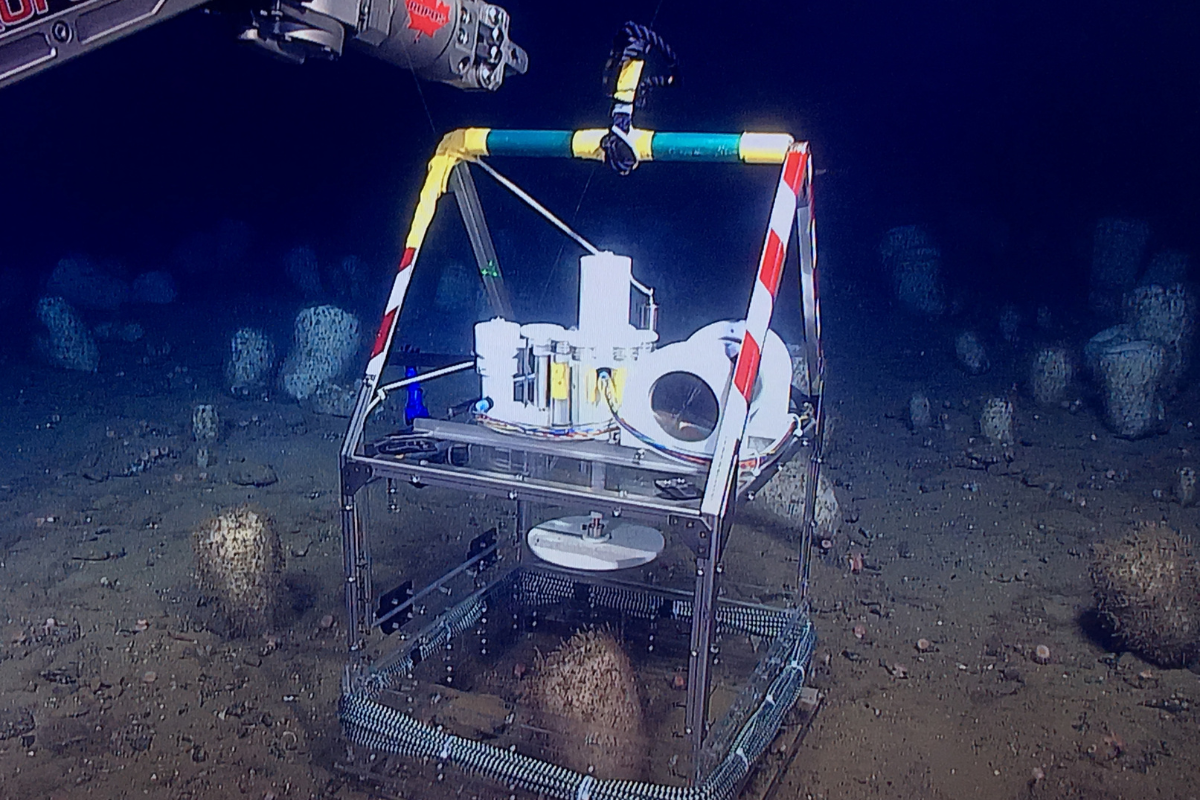Underwater robot offers helping hands in ocean depths

A Remotely Operated Vehicle (ROV) is an advanced robot that can perform tasks on the ocean floor. It is connected by a long cable to a research vessel and controlled from there by pilots. The NIOZ (Royal Netherlands Institute for Sea Research) has contracted the Norwegian technology firm Kystdesign to build the ROV. On Tuesday, 28 January, NIOZ Director Han Dolman and Tore Nedland, Director of Kystdesign, signed the contract for the construction of the underwater robot, which is expected to be delivered in two years’ time.
Arms take over human work
The ‘Supporter 6000’ underwater robot, which is being procured for the entire Dutch marine research community, has a depth range of up to 6000 metres below sea level. “We currently don’t have anything like it available for the Dutch scientific community”, explains Gert-Jan Reichart, head of the NIOZ Ocean Systems department. “The robot is equipped to take over the work of humans at great water depths. With its six high-resolution cameras and strong gripping arms, it forms our eyes and arms underwater. One of them can rotate along seven different axes. That’s more than a human arm can move. The ROV is also equipped with a so-called Atlas arm, which is so strong that it can break open shipwrecks for archaeologists, or break off pieces of rocks for geologists.”
There are several more functions that turn the robot into a deep-sea high-tech laboratory. Reichart: “The ROV offers us researchers helping hands on the ocean floor. It can blow away sediment to improve visibility, it has a vacuum tube to suck up small sea creatures, it can make 3D scans, it has Multi Beam instruments for mapping the sea bed, and it will be able to not only take the temperature of deep-sea hydrothermal vents, but also take samples to determine which metals are present.”

Experiments in the deep ocean
The ROV will be assigned a role aboard the RV Anna Weber-van Bosse, the future flagship of the Dutch research fleet. It has been financed by a grant from the Large-Scale Scientific Infrastructure fund. Reichart explains that it will bring the Netherlands from an age of observations to an age of ‘hands-on’ experimentation in the deep ocean. “We’ll be able to conduct experiments that marine researchers have had to rely on foreign expeditions to do until now. Things like working with stable isotope tracers, where you cover deep sea corals and sponges with a box, and then add for example isotopic labelled sugar or carbon dioxide. That allows us to determine who eats whom in the deep ocean, which is important for understanding the ecology of the deep ocean.”
Pilots from in-house Robotics Centre
With a length of 3 meters and a weight of 4.5 tonnes, the ROV will need a special winch and crane mounted on the deck of the Anna Weber-van Bosse. “The new ROV will be attached to a thick cable for the power and glass fibre connections, so we can work very accurately underwater. But to do that, we’ll need specially trained pilots to ‘fly’ the robot, as it’s called”, says Reichart. “Two of them will work in the NIOZ’ own new Robotics Centre The brand-new RV Anna Weber-van Bosse will offer this advanced underwater robot to the entire Dutch marine research community starting from mid-2026.”


